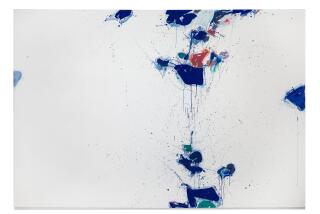Exhibit Paints Rich Portrait of Japan’s Edo Period
- Share via
WASHINGTON — From perhaps the world’s smallest kite to acrobatics by Tokyo firefighters, a once-in-a-lifetime view of Japan goes on display Sunday, back to the age before Americans opened the country to the outside world nearly 150 years ago.
It is an exhibit called “Edo--Art in Japan 1615-1868.” Tokyo was known as Edo in the 17th century, when it had a million inhabitants and was the world’s largest city, said Earl A. Powell III, director of the National Gallery of Art.
Artists created paintings and prints like Katushika Hokusai’s “Great Wave.” But the artists did not think it was beneath them to design kimonos and dinner plates.
All are in the show, as well as fantastic military armor, a wealth of panoramic gold screens and views of the capital’s “floating world” of geishas and courtesans. Some of the nearly 300 pieces have never been exhibited, even in Japan.
They belong to 75 lenders who have kept them in near-perfect condition by locking them carefully away and taking them out only occasionally for favored guests.
At the end of the display, six computer kiosks offer visitors a virtual walking tour of old Edo, including a visit to the residence of the ruling shogun and a Kabuki theater performance.
It will be at the gallery through Feb. 15, and will not be shown anywhere else before returning to Japan.
With it goes a festival that includes designing and flying kites, dance troupes, acrobatic firefighters, flower arrangements and a look backstage at the traditional Japanese Kabuki theater.
Also, there is a link to the gallery’s big exhibit of paintings by Vincent van Gogh. One of the Van Gogh paintings, “The Courtesan,” is his version of a Japanese print he saw on a magazine cover.
The original print by Keisei Eisen will be on view in the Edo show through Jan. 4, the day after the Van Gogh show closes.
Artists in France of the 1870s and 1880s were enthralled by Japanese art. Van Gogh decorated his room with them in the asylum where he committed himself in St. Remy.
“They draw a figure in a few well-chosen lines with the same ease, as effortless as buttoning up one’s vest,” Van Gogh wrote to his brother, Theo.
Although the rulers of Japan largely forbade travel and trade with the rest of the world until after the Americans came in 1853, historians now say Japan was less isolated than used to be thought, said Robert T. Singer, curator of the show.
The Japanese ban on most foreign books and art was lifted in 1720, more than 130 years before Commodore Matthew Perry’s black ships anchored in Tokyo Bay.
A Japanese nobleman’s coat bears a design of a Western ship under full sail.
But the Japanese love of kites came from China centuries ago, said Diane Durston, producer of the exhibit. She showed what she said is the world’s smallest kite--part of an elaborate demonstration of kite making, kite painting and kite flying that goes with the show.
The tiny kite is a red dot of paper about an eighth of an inch square, created by artist Nebuhiko Yoshizumi.
“It didn’t fly,” Durston lamented. “In fact, it got lost for a while when we tried.”
More to Read
The biggest entertainment stories
Get our big stories about Hollywood, film, television, music, arts, culture and more right in your inbox as soon as they publish.
You may occasionally receive promotional content from the Los Angeles Times.










